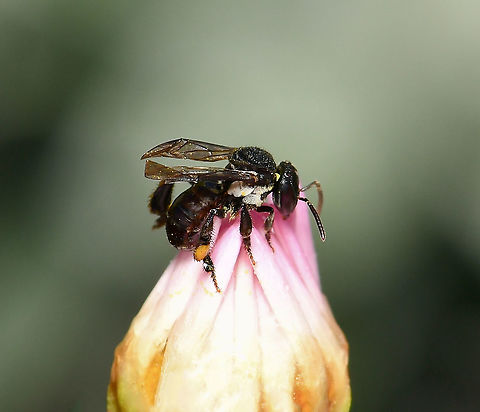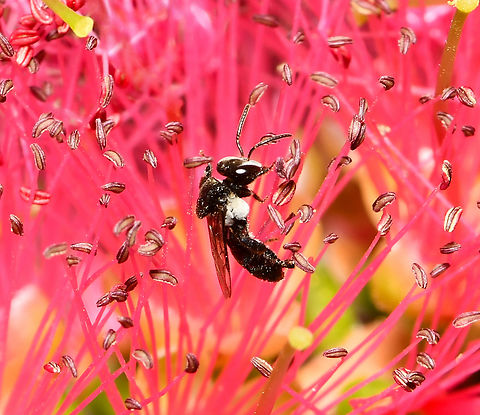
Appearance
It has been identified as an insect that collects pollen from the cycad "Cycas media". They are also known for their small body size, reduced wing venation, and highly developed social structure comparable to honey bees.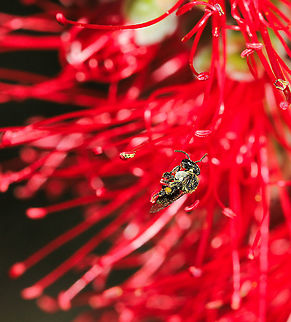
Behavior
"T. carbonaria" depends on nectar and pollen for survival. They also collect resin for use in the nest structure. Workers tend to exhibit characteristics of group-foraging behaviour called "opportunism". In short, opportunism is when many foragers search for resources independently, and once they find a highly resourceful flower, they rapidly recruit nest mates. In other words, they are optimising the feeding intake of the colony. The success in this practice is dependent on chance. If a forager encounters an area full of rich resources, then recruitment and harvesting are extremely heavy in this area until the resources are depleted.Workers look for areas with the highest sugar concentration in the nectar, as they have the ability to physiologically identify the richest sugar solutions. As more nest mates arrive to the area with rich resources, the availability of this high-concentration sugar decreases to a point where moving onto another area that might be lower in concentration is best. In "T. carbonaria" colonies, only some of the bees do the foraging. Workers spread out in all directions surrounding the colony, and quickly locate the best option nearest the nest. Once this area is found, they mark the food sources with a pheromone. Marking is used as a guide to make the location easier to find for their nest mates.
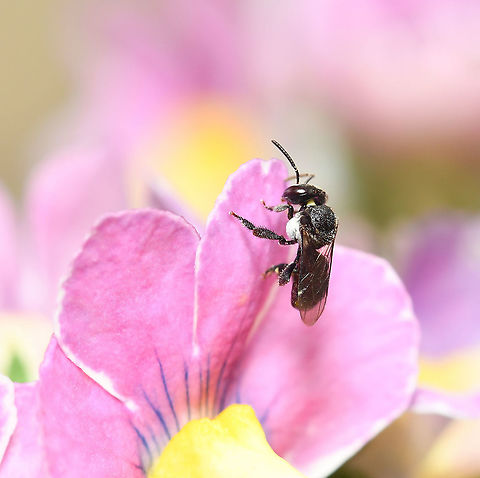
Habitat
The nests are found in open forests and woodlands. They are usually built in tree cavities, and have small cryptic entrances, with no external entrance tube. Four or five workers are usually visible at the entrance and are expected to be guards.They tend to choose larger trees and wider cavities to produce insulation valuable for their survival in the cool regions. Some features that would favour survival in a cooler climate are a high tree height and large feeding pots. The nesting sites of "T. carbonaria" are located near the top tree trunks that are 1.5 m in diameter, and are predominantly found in trees that are well insulated.

Reproduction
A study used microsatellites to determine the origin of males. The resident queen was the sole mother of the males. This meant that the workers did not contribute to the production of males. Ovaries were sometimes present in the workers, but not activated. This is unusual because most stingless bee workers can produce unfertilized eggs that develop into haploid males, therefore having both the queen and the workers with potential to be the mother of the males in the colony. This is also unusual because usually some sort of kin-selected benefits towards worker reproduction exist. One possibility could be that the queens have power over their workers. The aggressive oviposition can sometimes be seen as the queen "bullying" the other party into refraining from reproduction. However, very little queen-worker agonism occurs during oviposition in "T. carbonaria". Another possibility could be some sort of "evolutionary arms race" between workers and queens over which the caste has power to produce males. This could depend on some extrinsic factors such as the size of the colonies, the number of brood cells available for oviposition, and size dimorphism of queens and workers. A final possibility could be that workers have evolved to "self-restrain" from egg-laying because worker reproduction creates a significant cost to the colony. Some of these costs could be low reproductive success of worker-laid males or reduced colony productivity since the workers now have to focus on reproduction instead of colony maintenance.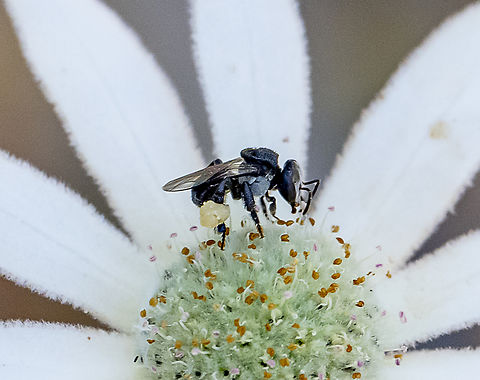
Predators
One predator known to the "T. carbonaria" is an Australian crab spider, "Diaea evanida". This organism, along with others, is able to exploit the interaction between plants and their pollinators. These nectar robbers pierce a hole in the corolla of the flower and drink the nectar without touching the pollen or stigma. A correlation seems to exist between nectar production and corolla tube length, so the crab spiders preferentially exploit the flowers with longer corolla tubes for higher nectar content. These crab spiders attract and ambush pollinators on flowers. They produce UV-reflective body colours that attract prey to the flowers they are occupying. However, Australian native bees are able to detect and avoid flowers harbouring crab spiders despite the fact that they are initially attracted to them. "D. evanida" spiders can generate colour contrasts for bees’ individual preferences, but "T. carbonaria" did not show any preference for any of the contrasts.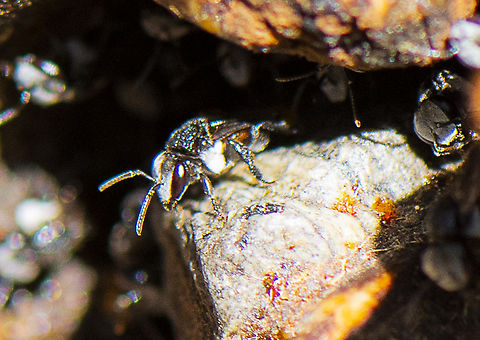
Defense
Twenty-one genera of stingless bees are described worldwide. As the name would suggest, the stings of these bees are vestigial and useless in defence. About 14 species are found in Australia, mostly in the tropical north. "T. carbonaria" is one of the few exceptions, in which they are found as far south as Bega in southern New South Wales. Stingless bees and honey bees are thought to have evolved from a common ancestor, like bumblebees, which would explain their similarities in social behaviour. Some of these similarities are co-operative brood care, and having different castes of queens, workers, and drones. The workers are infertile females, while the drones are males.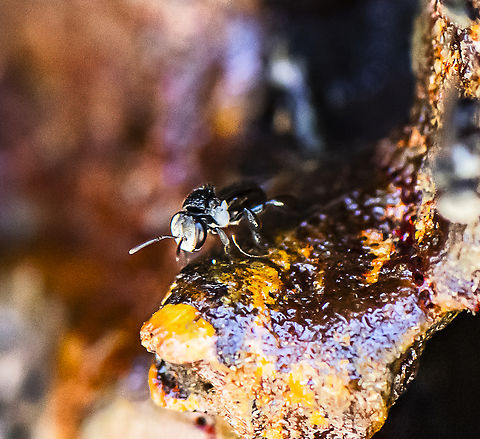
Evolution
"T. carbonaria" forms honeycombs in their nests. The bee produces an edible honey; the whole nest is sometimes eaten by Indigenous Australians. The bees "mummify" invasive small hive beetles that enter the nest by coating and immobilising the invaders in wax, resin, and mud or soil from the nest.References:
Some text fragments are auto parsed from Wikipedia.
